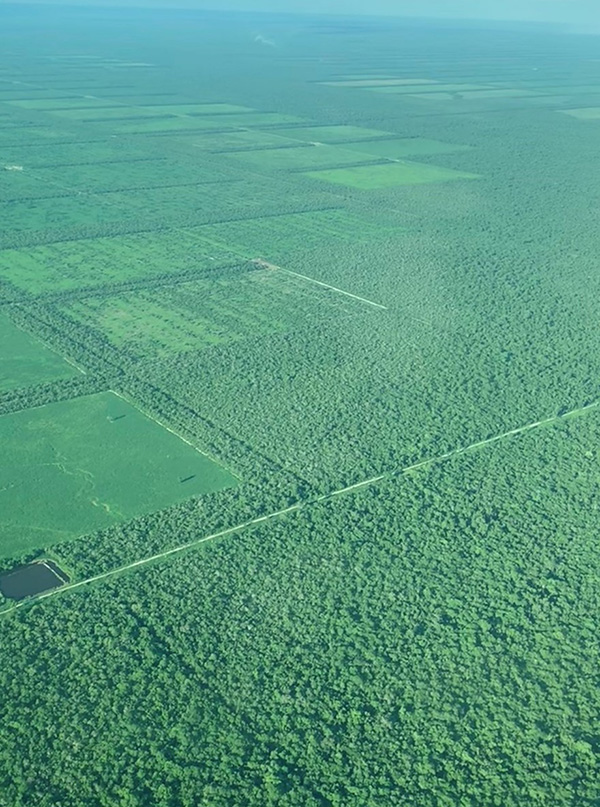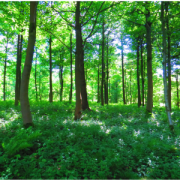As a result of new international standards and increased interest from stakeholders in infrastructure development projects, requirements for companies to disclose and mitigate their nature-related impacts are increasing. With biodiversity in crisis and many companies aiming to deliver net-positive biodiversity impacts, it is more and more important to identify the biodiversity challenges businesses face and design efficient management actions to address them. The Smithsonian Institute (SI) has been collaborating with the private sector for more than two decades, using a scientific approach to identify impacts and provide solutions for supporting biodiversity throughout the cycle of operations for projects in the energy and agricultural development sectors.
A scientific approach to devising solutions to mitigate impacts on nature can benefit business in many ways, such as through the following:
-
Quantifiable results that support environmental, social, and governance (ESG) reporting and alignment with national and international frameworks
-
Transparency and credibility conferred by peer-reviewed publications
-
Measurable co-benefits of biodiversity actions that support other aspects of corporate social responsibility (CSR), namely climate and social commitments
-
Collecting data that provides a basis for adaptive management to address new or changing challenges
-
Examples that shape policy through innovation and experimentation, allowing companies to become a model for their sector
In this Advisor, we present a case study that demonstrates the scientific approach to solutions for business biodiversity challenges. The example highlights how the resulting evidence has been channeled into nature positive management actions.
Scoping/Exploration: A Science-Based Web-Mapping Tool to Support Strategic Landscape Planning
Scoping/exploration is the first phase of development projects. Project scoping should identify potential impacts on biodiversity, determine likelihood or risk of negative impacts, and identify alternatives for avoiding impacts. A scientific and systematic scoping or screening assessment may involve additional time and effort but ultimately reduces costs by identifying strategies for avoiding impacts, assessing potential offsetting opportunities, and prioritizing fieldwork to better manage biodiversity risks during project implementation.
In 2019, SI began collaborating with International Finance Corporation (IFC) to address concerns related to environmental risks of development in the Paraguayan Chaco. The Paraguayan Chaco represents a region of biodiversity and economic importance that urgently needs a landscape-planning approach to minimize further deforestation and ensure conservation of its remaining natural habitats (see Figure 1).

SI and IFC are co-developing an innovative web-mapping tool, grounded in IFC’s Performance Standard 6 (PS6), to support informed decision-making for sustainable investment and development. The scientific data incorporated in the decision-support tool aligns with the key variables identified in the PS6 framework. These include natural and modified habitats, number of Priority Biodiversity Values, three levels of critical habitats based on their likelihood of occurrence, legally protected areas and internationally recognized areas, and environmental risk ranks based on the biodiversity conservation importance of the area.
Using a participatory stakeholder approach, this web-mapping platform, known as ASIST-Chaco, is the first to upscale key PS6 variables from the project to the landscape level for a specific region. The methodology applied was defined during technical meetings with SI scientists and IFC biodiversity experts, and specific data is being gathered through consultations with local and international experts. This process ensures transparency and reliability of spatial information, alignment with PS6, and accuracy of spatial analyses performed.
ASIST-Chaco will inform transparent, nature positive, evidence-based decision-making for sustainable development investments by identifying environmental risk areas based on ecological and environmental variables customized for the Paraguayan Chaco, providing science-based, up-to-date spatial data to support environmental criteria widely used among financial institutions. It also allows for compilation of environmental and ecological spatial data for an area of interest provided by the user. The platform will launch in 2023. It will require regular data updates, and it will be possible to extrapolate the model to other regions.
[For more from the authors on this topic, as well as other case studies, see: “A Science-Based Approach for Nature Positive Goals.”]
©2022 Smithsonian. All rights reserved.











